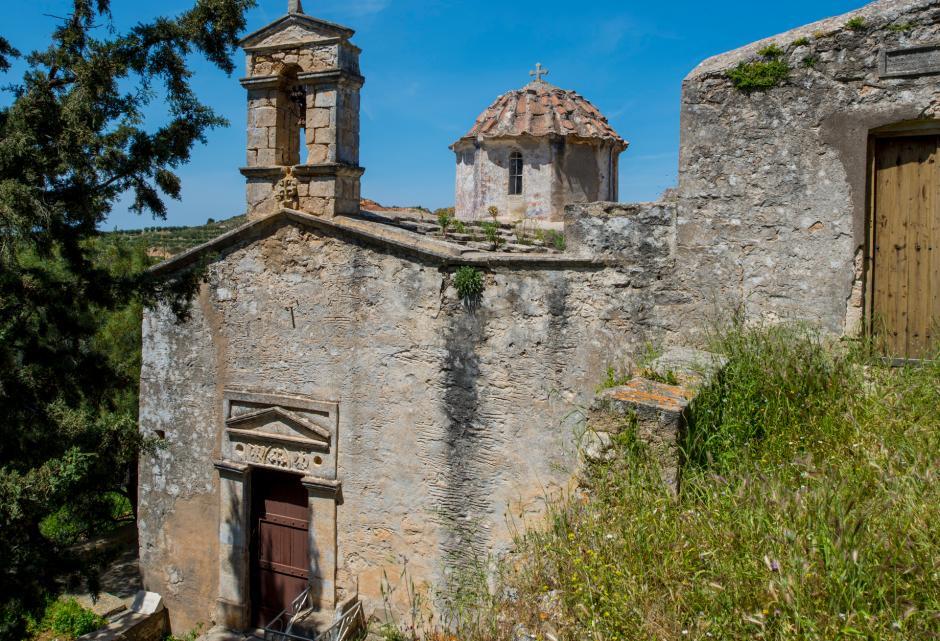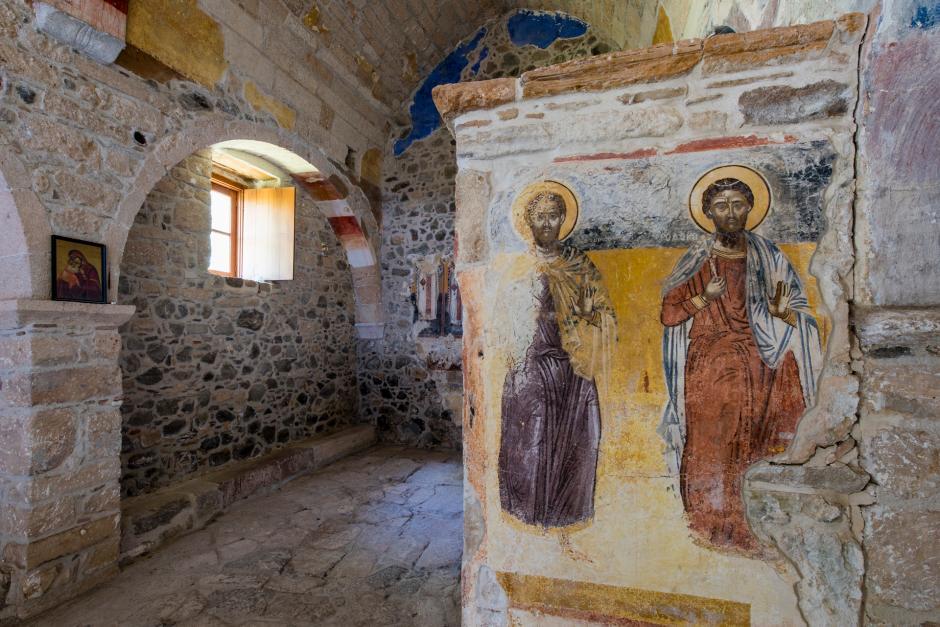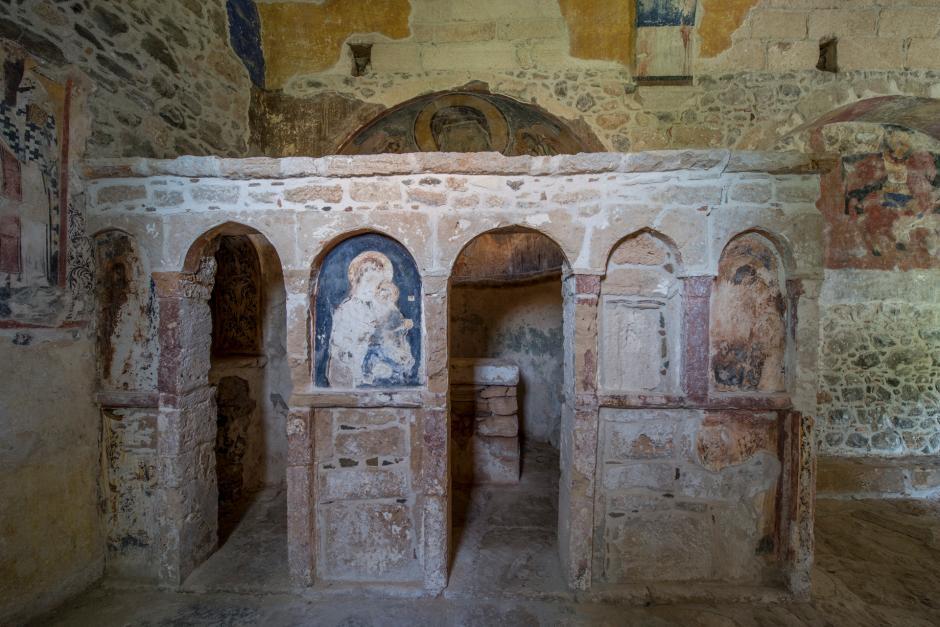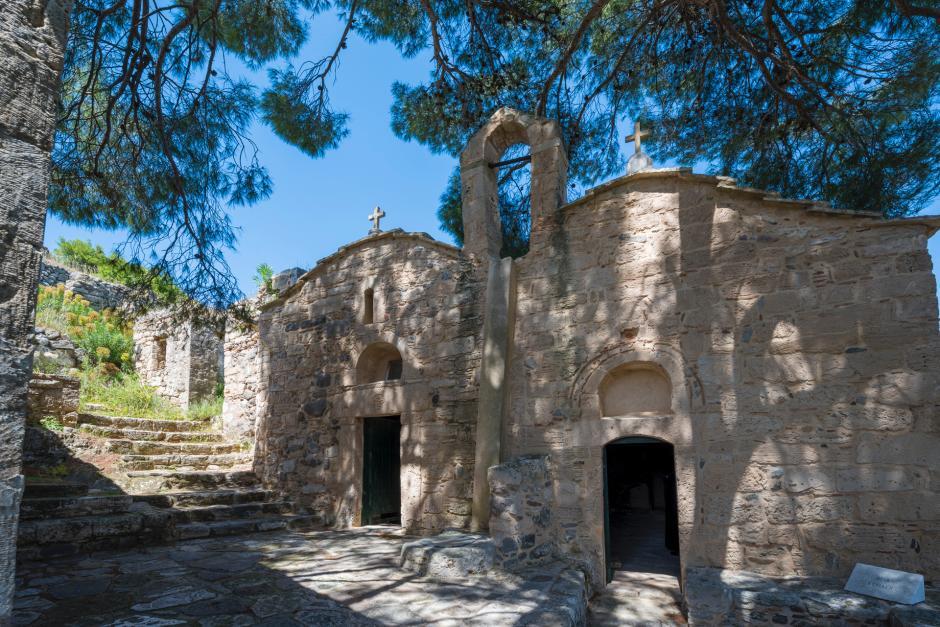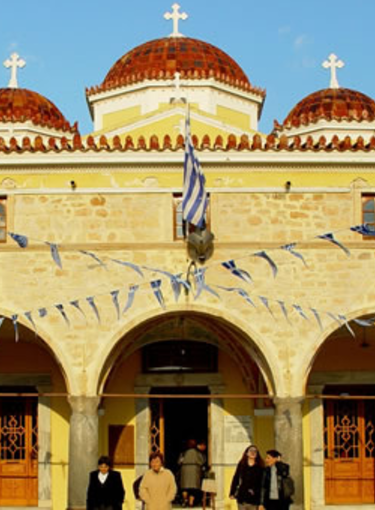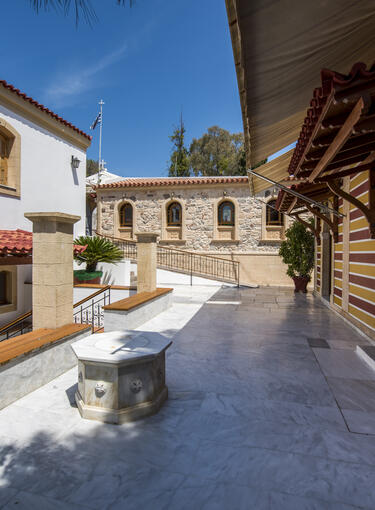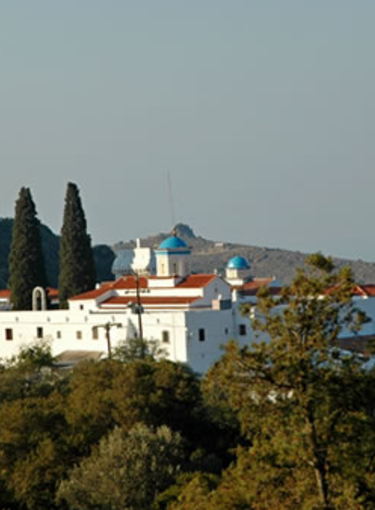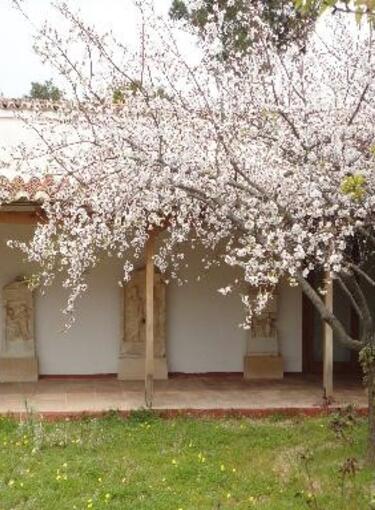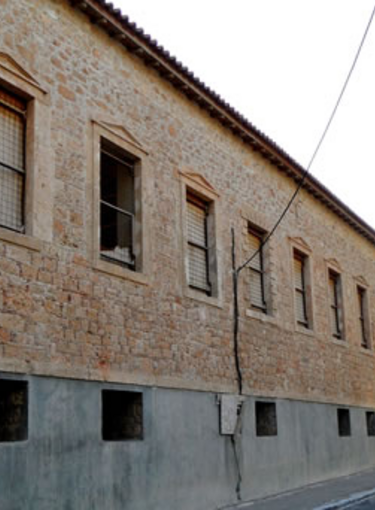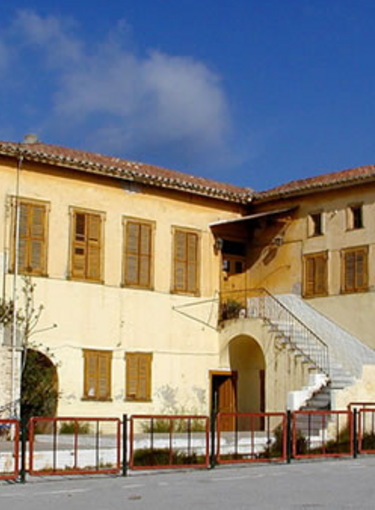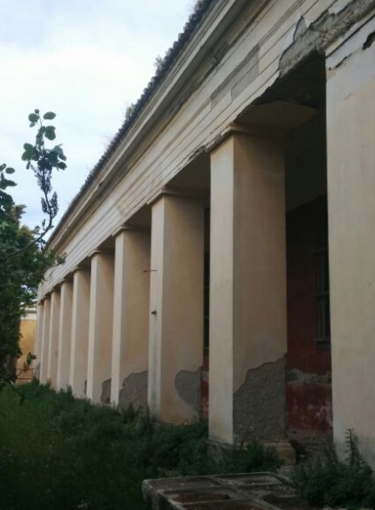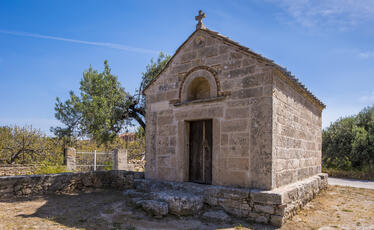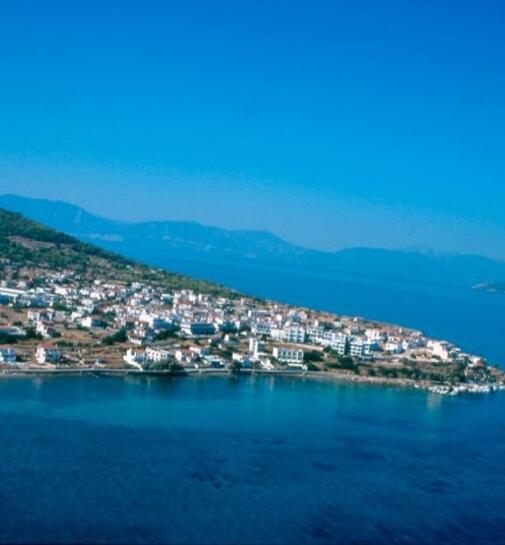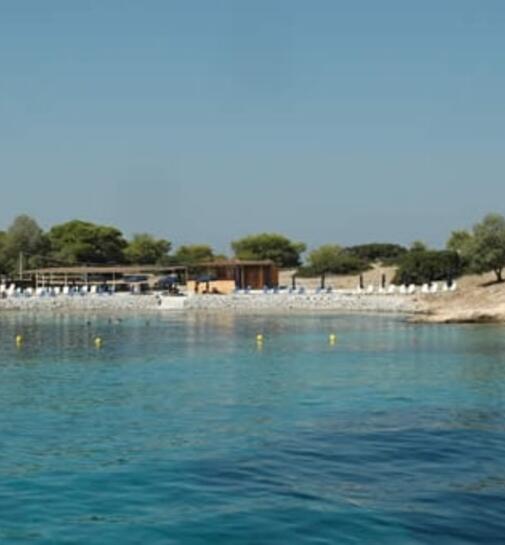Major Pilgrimages & Other Religious Monuments
On the steep hill that is located opposite the Monastery of Agios Nektarios, at the area of Xantos, is the location of the ruins of Paleochora, the Byzantine capital of Aegina, also known as the “island Mistras”.
At the same area was the ancient city of Oie, while in the 5th-6th century Christian churches must have already been there. The Byzantine settlement dates in 896, when the people of Aegina moved here trying to avoid pirate raids. The city developed amphitheatrically on the slope of the hill, with small, densely built houses, where among them it is said that there were 365 churches, one for every day of the year. From the beginning of the 13th century Paleochora met numerous conquerors and suffered a lot of destructions, with the most serious the one by Barbarossa in 1537. In the beginning of the 19th century its residents started to abandon it and to settle in the present-day capital, so its buildings were abandoned and collapsed.
Today, on the hill we can discern the ruins of the castle, which was built by the Venetians in 1654, and the churches, from which only 38 still survive. Most of them are small, single-aisled and belong to the type of the basilica, while there are cross-in-square churches and twin churches, which were dedicated to two saints or were used for two different religious doctrines.
The Metropolis during the Byzantine Period was Panagia Foritissa (later renamed to Agios Georgios the Katholic), and during the Turkish occupation the Bishopric, where Agios Dionysios of Zakynthos resided at a cell, who was the Archbishop of Aegina in 1576-1579. Other important churches are the church of Stavros (Holy Cross), at the entrance of the city, the church of Metamorphosis, with a beautiful wall painting at the altar area, the church Agios Nikolaos Mavrikas, with remarkable wall paintings of 1330, the monastery of Agia Kyriaki with the church and the cells.
The icons of the churches, which are not always preserved in good condition, are of exceptional art and represent the dominant art tendencies of the long period from the 13th to the 18th century.
Informations
Additional
Date:
9th century
Season:
Byzantine
Holy Metropolis:
Hydra, Spetses and Aegina
Under the Supervision of:
Archaeological Service of western Attica, Piraeus and Islands
Address:
Xantos
Access:
Car
Parking:
Free


